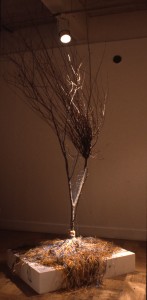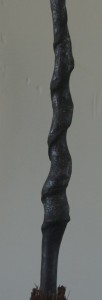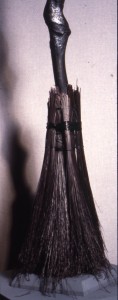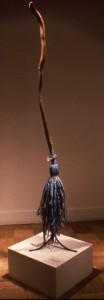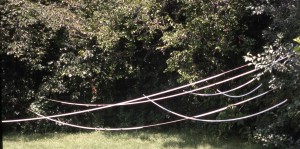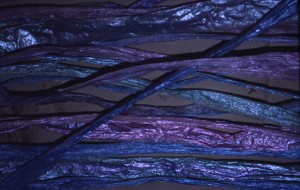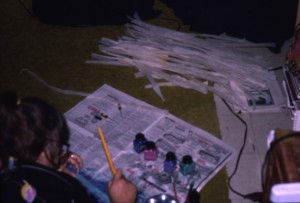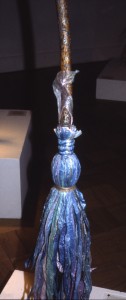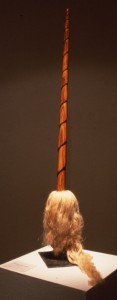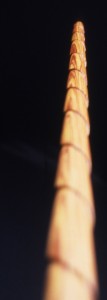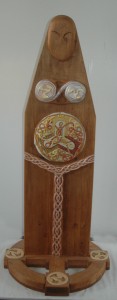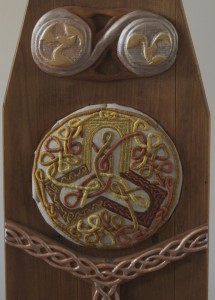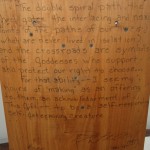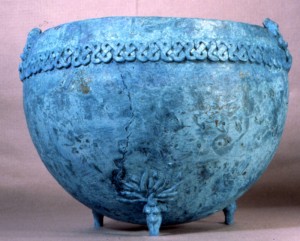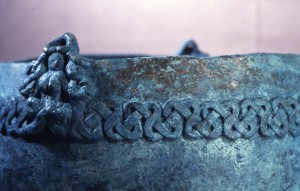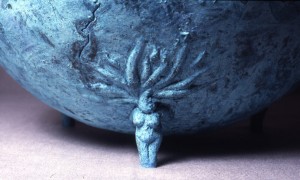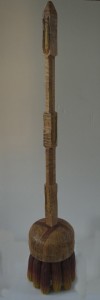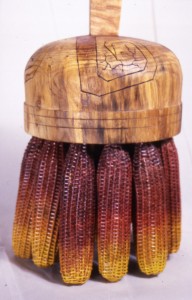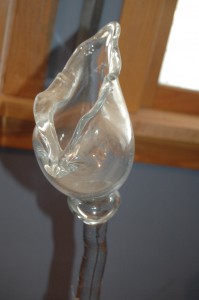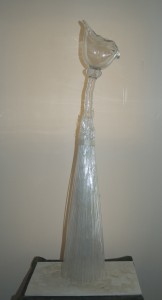From Sweeping Changes
PreGeneration was one of Rae’s pieces that was up for the Sweeping Changes show, and because of its configuration and size, and the lack of space to store things, was dismantled and now gone. All that is left is the woven “spider web” from the branching on the top of the piece.
Rae wanted to use a piece of “witches-broom”, a condition appearing on a woody plant, often a tree, where the natural growth pattern is interrupted, and instead of a single branch, many are formed at a node. The result looks like a broom or bird’s nest. You can often see these in stands of willow growing near a stream, and that is where we found the stick for this one. But instead of turning the branches down, and using them as the skirt, she kept it upright, and added a skirt that is more of a grass skirt, or roots, coming off the stick very low, and flowing out over the pedestal.
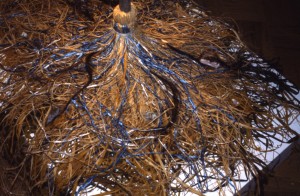
Within this skirt were small soapstone carvings of animals. This piece represented an origin story, the generation of life. It hearkens to the old explanation of “spontaneous generation” that was offered long ago as where certain creatures came from. Like fire that will appear without a match or spark if fuel-soaked rags are left in an enclosed space, it was believed that trash and detritus would generate bugs and mice.
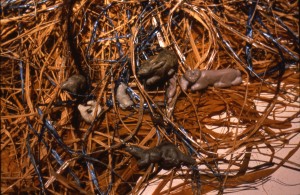
I have searched, but not found any of the small carvings that were in this piece, perhaps Rae gave them away as gifts, or left them as a physical libation in nature somewhere.
